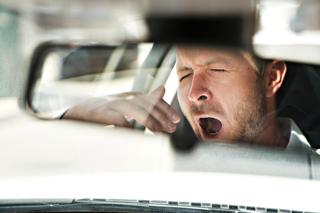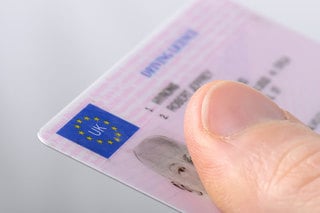By Mark Cartwright, head of commercial vehicle incident prevention at National Highways
When we talk about speed, the conversation often shifts to stopping distances. People tend to boast about their vehicle’s big brakes or their Formula One driver reflexes.
But let’s take a step back and think about the laws of physics for a moment.
Imagine you’re up in a helicopter, looking down at a stretch of motorway. You see two vehicles: one vehicle in lane one travelling at 70mph and another in lane two travelling at 100mph.
Suddenly, a massive hole appears in front of them. Both drivers hit the brakes at the same time.
The vehicle going at 70mph manages to stop just before the edge, but the one travelling at 100mph plummets over into the hole.
Here’s the question: how fast was the second vehicle going when it went over the edge?
Most people don’t get this right: the answer is just under 72mph. Despite an initial speed difference of 30mph, the faster vehicle was still doing over 70mph when it went over the edge.
This happens because you don’t lose speed in a straight line; you lose it exponentially based on the initial energy.
More commonly, imagine the faster vehicle is doing 80 mph instead. Even then, it is still doing almost 40mph when it reaches the edge. Replace that hole with something solid, and the impact at that speed could be devastating.
What if it’s two HGVs? One is doing 50mph and the other is running on the limiter at 56mph. Both hit the brakes at the same time.
The 50mph truck stops, but the 56mph truck goes over the edge at 28mph – or into stationary traffic.
These are best-case scenarios. If the driver’s reactions are slow or distracted, or the vehicle isn’t well-maintained, the outcome could be much worse.
Finally, let’s bring this into an urban setting with a speed limit of 30mph.
A vehicle going at 30 mph stops just before hitting a child who stepped into the road.
However, a vehicle moving at 35mph is still doing 18mph at the point of impact with the child.
If you hit someone at around 18 mph, you are more likely to kill them than not.
So please think carefully about your choices and those of your drivers – reducing your speed by a few miles per hour won’t significantly affect your arrival times, but it could save a life.
Myths about speeding
Drivers believe their own reaction times to be sufficient in the event of sudden hazards. However, the time between a focused driver noting a hazard and hitting the brake are generally between half and one second. After that, it’s a matter of momentum. Even Lewis Hamilton can’t change the laws of physics.
Braking distances are directly proportional to speed. Slowing down isn’t linear. If two identical vehicles, one doing 70mph and one doing 100mph, are momentarily alongside each other and both drivers hit the brakes simultaneously, when the first car stops, the second will still be travelling at 71mph.
Speeding shortens journey time. In the UK, with traffic lights, roundabouts, and urban traffic, speeding makes virtually no difference to journey time. It saves less than five minutes on motorway journeys under 50 miles at 80mph.
The police don’t prosecute 10% over the speed limit. A driver exceeding the speed limit by any amount is breaking the law and open to prosecution. If they are driving too fast for the conditions, they can be prosecuted for careless or dangerous driving even if they are not exceeding the posted speed limit.
Modern brakes are so good, speed isn’t an issue. Even autonomous braking systems cannot prevent all collisions. The issue is not how fast the vehicle can stop but how close it is to the hazard. If all vehicles could stop before impact, collisions would never occur. Often the deciding factor between life and death is impact speed.
Going too fast for the road or the conditions
- Compromises the driver’s ability to handle the vehicle.
- Reduces reaction times.
- Adds cumulative kinetic force to any collision, making serious injury or death much more likely.
- Twice the speed requires four times the braking distance.
- Speed reduction is not linear – the faster your vehicle is travelling, the more slowly it loses speed when braking.
- Even slightly higher impact speeds disproportionally increase the risk of death.
What are an employer’s responsibilities?
What should safety managers and fleet managers be doing to support the safety of their drivers and other road users?
• Check that your driver handbook & driving for work policy specifies that drivers should not exceed speed limits.
• Make sure you are not issuing routes and jobs where your drivers are likely to be placed under significant time pressure.
• Check that there are no incentives in place to cause your drivers to exceed the speed limit.
• Make sure your drivers understand there are different speed limits for the different vehicles they may have to drive.
Driving for Better Business, a free-to-access National Highways programme, has a series of fleet safety topics changing monthly, covering roadworthiness, distracted driving, safe loading and more.



















Login to comment
Comments
No comments have been made yet.